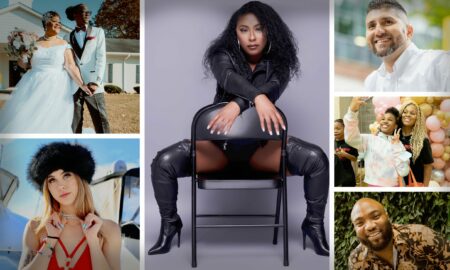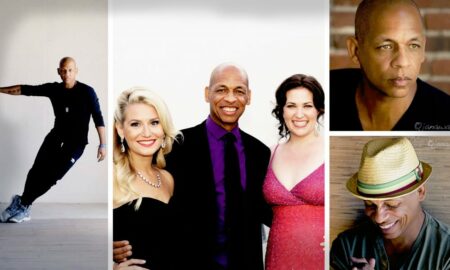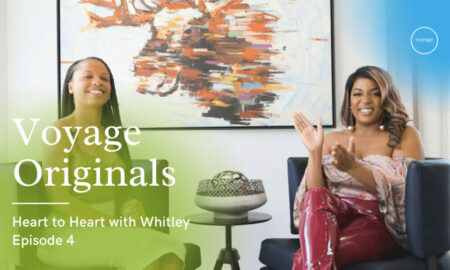

Today, we’d like to introduce you to Liuyun Hu.
Hi Liuyun, please kick things off for us with an introduction to yourself and your story.
From a young age, immersed in the rich tapestries of Chinese culture, I found my voice through the vivid language of visualization and painting. Beginning at the young age of 5, this 18-years long journey through the realms of color and concept has not only been a means of expression but a way to weave observations of social and psychological phenomena into tangible forms. My passion for storytelling through art propelled me towards illustration, a discipline that allowed me to probe deeper into the intricate web of human experiences.
My undergraduate journey was a profound exploration of contrasts and synthesis. The initial years, enriched by the tradition of Chinese painting, endowed me with a holistic lens through which I viewed the world—a perspective that values the interconnectedness of all things. This foundation was dramatically expanded when an exchange program transplanted me from China to America. When I came here and started learning about the Western culture, these diverse influences guided me to form my own unique narrative style. It was during this period of cultural assimilation that I encountered design thinking through a storyboarding class, which led me to discover how to use story-telling to solve the real issue in the societal level.
This pivotal moment guided my path toward pursuing a Master’s Degree in Service Design. At Savannah College of Art and Design, I delved into the design of strategic directions for businesses and the public sector, employing a systematic approach honed through rigorous projects. My education was not just about acquiring skills; it was a transformational journey that bridged diverse cultures and disciplines, equipping me with a distinctive blend of insights. What I learned from different projects with non-profit organization ignites a newfound passion for systematic and strategic thinking.
With over three years of experience in service and experience design, I have navigated through various industries, harnessing my illustrative and digital design background. This journey has not only sharpened my ability to strategize and innovate but has also underscored the value of integrating traditional artistry with modern design methodologies. As I look toward the future, I am eager to leverage my expertise in service design, aiming to bridge gaps and forge new connections between classical art forms and cutting-edge design practices.
This narrative doesn’t just recount a professional journey; it tells the story of a continuous quest for integration and innovation—a tale of crossing cultural bridges, blending artistic passion with strategic design, and always striving to find new ways to tell stories that resonate. My journey has been enriched by a graduate anthropology class that expanded my perspective on the importance of cultural and political contexts in design, further distinguishing my work. This comprehensive understanding of the interconnectedness of social, economic, political, and natural systems, combined with a strategic approach to managing stakeholder relationships, positions me uniquely in the field. My ambition to continuously explore and address the systemic causes behind social phenomena through thoughtful design sets me apart from others, driving my passion for making meaningful, lasting contributions to society.
Alright, so let’s dig a little deeper into the story – has it been an easy path overall, and if not, what were the challenges you’ve had to overcome?
Navigating my journey has presented its challenges, particularly in melding my background in traditional landscape perspectives with Western culture and integrating this synthesis into my illustration and design work. Adapting to varied cultural communication styles within business environments has prompted deep reflections on evolving my own approach towards more engaging and open dialogues.
Engaging with projects on homelessness, public transportation, affordable housing, and healthcare accessibility, I’ve come to understand the profound impact of design decisions on communities. This realization gave me the compassion in transition design for its emphasis on sustainable, system-wide change and its potential to address the underlying causes of social issues.
My curiosity was further stimulated by a graduate anthropology class, which broadened my worldview and underscored the importance of cultural and political contexts in design. Pursuing my master’s degree in service design deepened my desire to explore the connections among social, economic, political, and natural systems and to refine my approach to stakeholder management within design strategies.
Thanks for sharing that. So, maybe next you can tell us a bit more about your work?
I bring value to the industry and businesses alike due to me seeing problems and objectives through a unique lens based on cross cultural exchange, my background in both the visual arts and strategic design, as well as my passion for systematic thinking. I am currently providing consulting services for anyone interested in streamlining or improving their business processes and systems.
My work sits at the confluence of traditional Eastern artistry and Western design principles, a unique blend that distinguishes my approach to illustration, strategic design, and service design. Specializing in integrating systematic visions derived from traditional Chinese landscapes with modern Western storytelling techniques. My expertise extends into adapting communication styles across different cultures, enabling more open and interactive dialogues within diverse business settings.
Outside of transforming complex business opportunities, I am also dedicated to solving social issues—such as homelessness, public transportation, affordable housing, and accessible healthcare—into accessible design projects that resonate with a wider audience. My capacity to render the abstract and to highlight the human aspect of systemic problems is what I am most proud of.
What would you say has been one of the most important lessons you’ve learned?
The most important lesson I’ve learned along my journey is the profound importance of empathy and cultural sensitivity in strategic design. Understanding and respecting the diverse perspectives, needs, and experiences of people from different backgrounds has been crucial in creating designs that are not only effective but also inclusive and respectful. This approach has taught me that to truly address complex social issues and business opportunities through design, one must delve deep into the fabric of human experiences, embracing the richness of varied cultural narratives and perspectives. It has reinforced the belief that good design is not just about aesthetics or functionality but about creating meaningful connections and fostering positive change in the community. This lesson in empathy and cultural sensitivity has become the cornerstone of my work, guiding my approach to every project and interaction.
Contact Info:

















